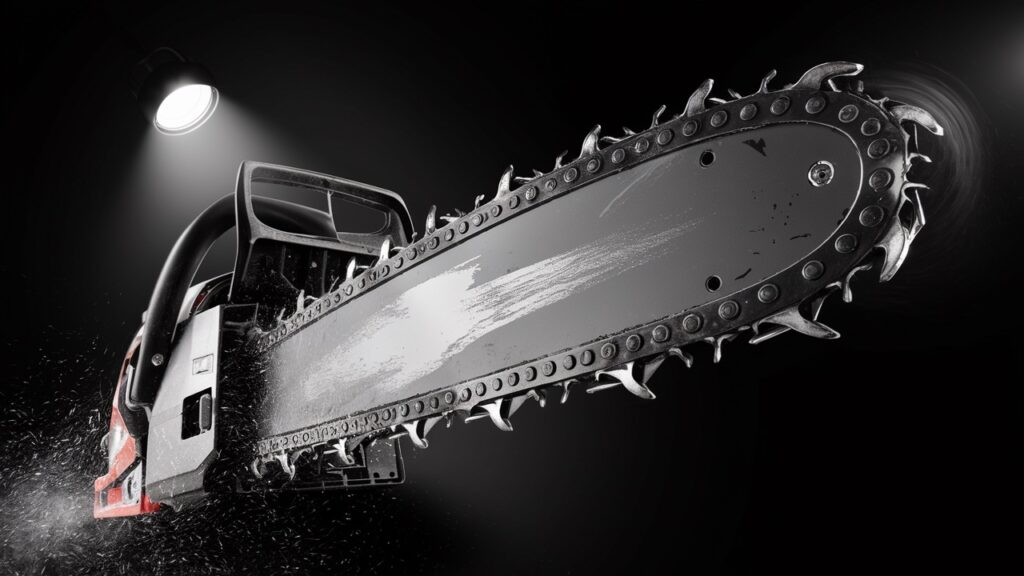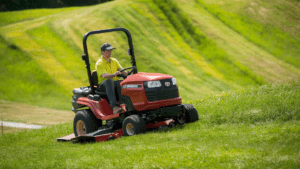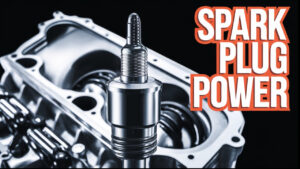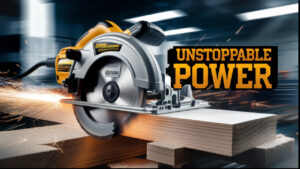To sharpen a chainsaw chain, use a round file that matches the chain’s pitch. Maintain the correct angle while filing each cutter to ensure optimal performance.
Sharpening a chainsaw chain is essential for efficient cutting and prolonging the tool’s life. A sharp chain makes your work easier, safer, and more enjoyable. Dull chains can lead to increased wear on the saw, requiring more effort and time to complete tasks.
Recommended Best 20 Inch Chainsaw Chain 2025
| Recommendation | Product |
| Best Overall | Oregon L81 ControlCut Chainsaw Chain |
| Popular Choice | Husqvarna X-Cut SP33G 20 Inch Chainsaw Chain |
| Best Value | UDC Parts D72 Chainsaw Chain |
| Best Budget | Oregon D72 AdvanceCut Chainsaw Chain |
| Another Excellent Pick | Oregon E72 PowerCut Chainsaw Chain |
Regular maintenance prevents accidents and enhances the quality of your cuts, whether you’re felling trees or trimming branches. Understanding how to sharpen your chainsaw chain properly can save you money on replacements and repairs. This guide covers the necessary tools and techniques to get your chain back in top shape, ensuring you’re always ready for your next project.
Introduction To Chainsaw Maintenance
Chainsaws are essential tools for cutting wood and maintaining landscapes. Proper maintenance keeps them running smoothly. A key aspect of this maintenance is sharpening the chainsaw chain. A sharp chain makes work easier and safer.
Importance Of A Sharp Chainsaw
A sharp chainsaw chain is crucial for effective cutting. It enhances performance and safety. Here are some reasons why a sharp chain matters:
- Efficiency: A sharp chain cuts faster.
- Safety: A sharp chain reduces kickback risks.
- Less effort: You exert less energy while cutting.
- Better results: Clean cuts look professional.
Signs Of A Dull Chainsaw Chain
Recognizing a dull chainsaw chain can save time and energy. Here are common signs:
| Sign | Description |
|---|---|
| Slow Cutting | The chainsaw struggles to cut through wood. |
| Burning Smell | Excessive friction creates a burning odor. |
| Uneven Cuts | Chainsaw produces jagged or rough cuts. |
| Increased Kickback | More kickback occurs when cutting. |
By recognizing these signs, you can sharpen your chain on time. Regular maintenance ensures your chainsaw performs at its best.
Safety First: Preparing To Sharpen
Before sharpening your chainsaw chain, focus on safety. Proper preparation ensures your well-being. Follow these steps to create a safe workspace.
Personal Protective Equipment
Wearing the right personal protective equipment (PPE) is essential. This gear protects you from potential hazards. Here’s a list of recommended PPE:
- Safety goggles – Protects your eyes from flying debris.
- Hearing protection – Shields your ears from loud noises.
- Gloves – Provides grip and protects your hands.
- Chainsaw chaps – Protects your legs from accidental cuts.
- Sturdy boots – Offers foot protection and stability.
Securing The Chainsaw
Securing your chainsaw is crucial for safe sharpening. Follow these steps to ensure stability:
- Place the chainsaw on a flat surface.
- Use a workbench or a sturdy table.
- Engage the chain brake to prevent movement.
- Secure the chainsaw with clamps if needed.
Check the environment. Ensure it is clear of obstacles. A clean workspace enhances safety.
Tools Of The Trade
Sharpening a chainsaw chain requires specific tools. Using the right tools makes the job easier and quicker. Below are two essential tools for maintaining your chainsaw chain.
Choosing The Right File
Selecting the correct file is crucial. Files come in different sizes and shapes. Here are the main types:
- Round Files: Ideal for sharpening the teeth.
- Flat Files: Used for the depth gauge.
Consider these factors:
| Chain Size | File Diameter |
|---|---|
| 1/4 inch | 3/16 inch |
| 3/8 inch | 7/32 inch |
| .325 inch | 5/32 inch |
| 3/8 inch Low Profile | 1/8 inch |
| Full Chisel | 3/16 inch |
Check your chain specifications. Use the right file for best results. This ensures a sharp and effective cut.
Using A Chainsaw Sharpener
A chainsaw sharpener simplifies the sharpening process. It can be manual or electric. Here are some types:
- Manual Sharpeners: Require physical effort. They are portable and easy to use.
- Electric Sharpeners: Make the job faster. They need a power source.
Follow these steps to use a sharpener:
- Secure the chainsaw in a stable position.
- Identify the correct angle for sharpening.
- Insert the file or sharpener into the teeth.
- Apply even pressure while moving back and forth.
- Check the sharpness regularly.
Using a sharpener can save time and effort. Regular sharpening maintains cutting efficiency.
Step-by-step Sharpening Guide
Sharpening your chainsaw chain is essential for efficient cutting. A sharp chain saves time and effort. Follow this guide for a quick and effective sharpening process.
Cleaning The Chain
Start by cleaning your chainsaw chain. Dirt and debris can hinder the sharpening process. Here’s how to do it:
- Remove the chain from the chainsaw.
- Use a wire brush to scrub the links.
- Wash the chain in soapy water.
- Rinse thoroughly and dry completely.
Inspect the chain for any damage. Replace any broken links or parts.
Setting The Correct Angle
Setting the right angle is crucial for effective sharpening. Most chainsaw chains require a 30-degree angle.
| Chain Type | Sharpening Angle |
|---|---|
| Standard Chain | 30° |
| Low Profile Chain | 25° |
Use a file guide to maintain this angle. This tool helps you achieve consistent results.
Filing Technique And Tips
Filing the chain requires focus and precision. Follow these steps for the best results:
- Choose the right file size for your chain.
- Hold the file at the correct angle.
- Apply gentle pressure while filing.
- File in one direction only.
- Check your progress regularly.
Remember these tips:
- File each tooth the same number of strokes.
- Sharpen the depth gauges as needed.
- Regularly inspect the chain during use.
With these steps, your chainsaw chain will be sharp and ready. Enjoy efficient cutting and less effort!
Gauging Success: Depth Gauge Adjustment
Properly adjusting the depth gauges is crucial for chainsaw performance. This ensures smooth cutting and extends the life of your chain. Let’s explore how to effectively manage depth gauges.
Understanding Depth Gauges
Depth gauges control how deep the cutter teeth penetrate wood. They affect the cut’s aggressiveness. If these gauges are too low, the chain digs too deep. This can lead to kickback. If they are too high, the chain may not cut efficiently.
Here are key points about depth gauges:
- Placement: Found in front of each cutter tooth.
- Purpose: Regulate the cutting depth.
- Adjustment: Essential for smooth operation.
Adjusting The Depth Gauges
Adjusting depth gauges requires a few tools and steps. Follow these simple instructions:
- Gather your tools: depth gauge tool, file, and ruler.
- Place the depth gauge tool over the cutter tooth.
- Check the height of the depth gauge.
- Use the file to lower the depth gauge as needed.
- Repeat for each cutter tooth on the chain.
Refer to the table below for recommended depth gauge heights:
| Chain Size | Recommended Depth Gauge Height (mm) |
|---|---|
| 1/4 inch | 0.5 |
| 3/8 inch | 0.6 |
| 0.325 inch | 0.7 |
| 0.404 inch | 0.8 |
Regularly check and adjust depth gauges. This will ensure the chainsaw cuts efficiently. Proper adjustments make cutting easier and safer.
Common Sharpening Mistakes To Avoid
Sharpening your chainsaw chain correctly is essential for effective cutting. Mistakes can lead to poor performance and safety risks. Here are the common mistakes to avoid.
Improper Filing Angles
Filing angles are crucial for a sharp chain. Many users sharpen at the wrong angle. This can cause uneven cutting and damage the chain.
- Angle of the Tooth: Most chains require a 30-degree angle.
- Depth Gauge Angle: Ensure it is filed to the right height.
Use a filing guide to maintain correct angles. This will help achieve a sharper edge.
Excessive Pressure
Applying too much pressure while filing can ruin the chain. It can lead to overheating and dull edges.
- Light Pressure: Use a light touch while sharpening.
- Short Strokes: Make smooth, short strokes to avoid damage.
Check your progress frequently. This ensures a sharp chain without overdoing it.
Maintaining Your Chainsaw Chain
Maintaining your chainsaw chain is crucial for efficient cutting. A well-maintained chain lasts longer and works better. Regular care helps prevent accidents and costly repairs.
Regular Cleaning
Cleaning your chainsaw chain is essential after each use. Dirt and debris can dull the blades. Follow these steps for proper cleaning:
- Disconnect the chainsaw from power.
- Use a brush to remove debris.
- Wash the chain with soapy water.
- Rinse and dry the chain thoroughly.
- Inspect for damage.
Keeping the chain clean enhances performance. It also makes sharpening easier.
Proper Storage
Proper storage protects your chainsaw chain from damage. Store it in a dry, cool place. Follow these tips for the best results:
- Use a protective case for the chain.
- Avoid leaving it in direct sunlight.
- Keep it away from moisture.
Storing the chain correctly prevents rust and wear. It extends the life of your chainsaw chain.
When To Replace Vs. Sharpen
Knowing when to replace or sharpen your chainsaw chain is crucial. Proper maintenance extends the life of your tool. Let’s explore how to assess chain wear and make the right decision.
Assessing Chain Wear
Start by examining the chain closely. Look for signs of wear:
- Dull teeth: If the teeth feel blunt, it’s time to sharpen.
- Missing teeth: Replace the chain if teeth are broken.
- Excessive stretch: Chains stretch over time. Measure the chain for elongation.
- Rust or corrosion: A rusty chain may need replacement.
Regular inspection helps catch problems early. Use a chainsaw gauge to measure tooth height. This ensures your chain is within the manufacturer’s specifications.
Deciding To Sharpen Or Replace
Ask yourself these questions:
- Is the chain still within the wear limits?
- Are most teeth intact?
- Can I sharpen the teeth without compromising safety?
Use the following table to help decide:
| Condition | Action |
|---|---|
| Dull teeth | Sharpen |
| Missing teeth | Replace |
| Excessive stretch | Replace |
| Rusty chain | Replace |
Sharpening is often quick and effective. Replacement should be a last resort. Regular maintenance keeps your chainsaw running smoothly.
Expert Tips For Advanced Sharpening
Sharpening a chainsaw chain requires skill and precision. Advanced techniques can enhance performance and extend the tool’s life. Use the right tools and methods for optimal results.
Precision Tools For Perfect Sharpness
Using the right tools is essential for effective sharpening. Here are some must-have tools:
- File Guide: Keeps the file at the correct angle.
- Round Files: Match the diameter to the chain size.
- Flat Files: Useful for depth gauges.
- Electric Sharpener: Provides consistent results quickly.
Follow these steps to achieve perfect sharpness:
- Secure the chainsaw in a vice.
- Clean the chain with a brush.
- Use the file guide for accurate angle.
- Sharpen each tooth evenly.
- Check depth gauges with a tool.
| Tool | Purpose |
|---|---|
| File Guide | Keeps the file at the right angle |
| Round Files | Sharpens the cutting teeth |
| Flat Files | Adjusts depth gauges |
| Electric Sharpener | Offers quick and consistent sharpening |
Sharpening Uncommon Chainsaw Types
Some chainsaw types require special attention. Here are tips for sharpening different chains:
- Skip Tooth Chains: Sharpen every other tooth.
- Ripping Chains: Follow manufacturer guidelines for angles.
- Specialty Chains: Use specific files designed for these types.
Always consult the owner’s manual for unique specifications. Each chain may have different requirements.

Conclusion: Ensuring Longevity And Efficiency
Sharpening your chainsaw chain is essential for effective cutting. Regular maintenance prolongs the life of your equipment. This section covers a routine maintenance schedule and the benefits of regular sharpening.
Routine Maintenance Schedule
Establishing a routine maintenance schedule is vital. Here’s a simple plan:
| Task | Frequency |
|---|---|
| Inspect chain tension | Before each use |
| Clean the chain | After every use |
| Sharpen the chain | After every 5 hours of use |
| Check bar and sprocket | Weekly |
Benefits Of Regular Sharpening
Regularly sharpening your chainsaw chain offers many advantages:
- Improved Cutting Performance: A sharp chain cuts faster.
- Increased Safety: A well-maintained chain reduces kickback.
- Fuel Efficiency: Sharp chains require less power to cut.
- Reduced Wear: Prevents damage to the bar and sprocket.
Keep your chainsaw efficient with regular sharpening. A little time spent maintaining it pays off.
Frequently Asked Questions
How Often Should I Sharpen My Chainsaw Chain?
You should sharpen your chainsaw chain after every 5 to 10 cuts, depending on the type of wood. Frequent sharpening maintains efficiency and ensures safety. Regular maintenance helps prevent unnecessary wear and tear on the chain, prolonging its lifespan and improving cutting performance.
What Tools Do I Need To Sharpen A Chainsaw Chain?
To sharpen a chainsaw chain, you need a round file, file guide, and depth gauge. A round file matches the chain’s pitch and ensures accurate sharpening. Using a file guide helps maintain the correct angle. Consider adding a flat file for depth gauge adjustments to enhance cutting efficiency.
Can I Sharpen My Chainsaw Chain By Hand?
Yes, you can sharpen your chainsaw chain by hand using a round file. Manual sharpening allows for precision and control over the sharpening angle. It’s a cost-effective method that requires practice. Make sure to follow the manufacturer’s guidelines to achieve the best results and maintain chain performance.
What Are The Signs My Chainsaw Chain Needs Sharpening?
Signs that your chainsaw chain needs sharpening include difficulty cutting, excessive smoke, and wood splintering. If you notice these symptoms, it’s time to sharpen the chain. A dull chain can cause kickback and increase the risk of accidents. Regular checks will ensure your saw operates safely and efficiently.
Conclusion
Sharpening your chainsaw chain is essential for efficient cutting and safety. Regular maintenance not only extends the life of your tool but also enhances performance. By following the steps outlined in this guide, you can keep your chainsaw in top condition.
Invest time in this task, and enjoy smoother, faster cuts.








